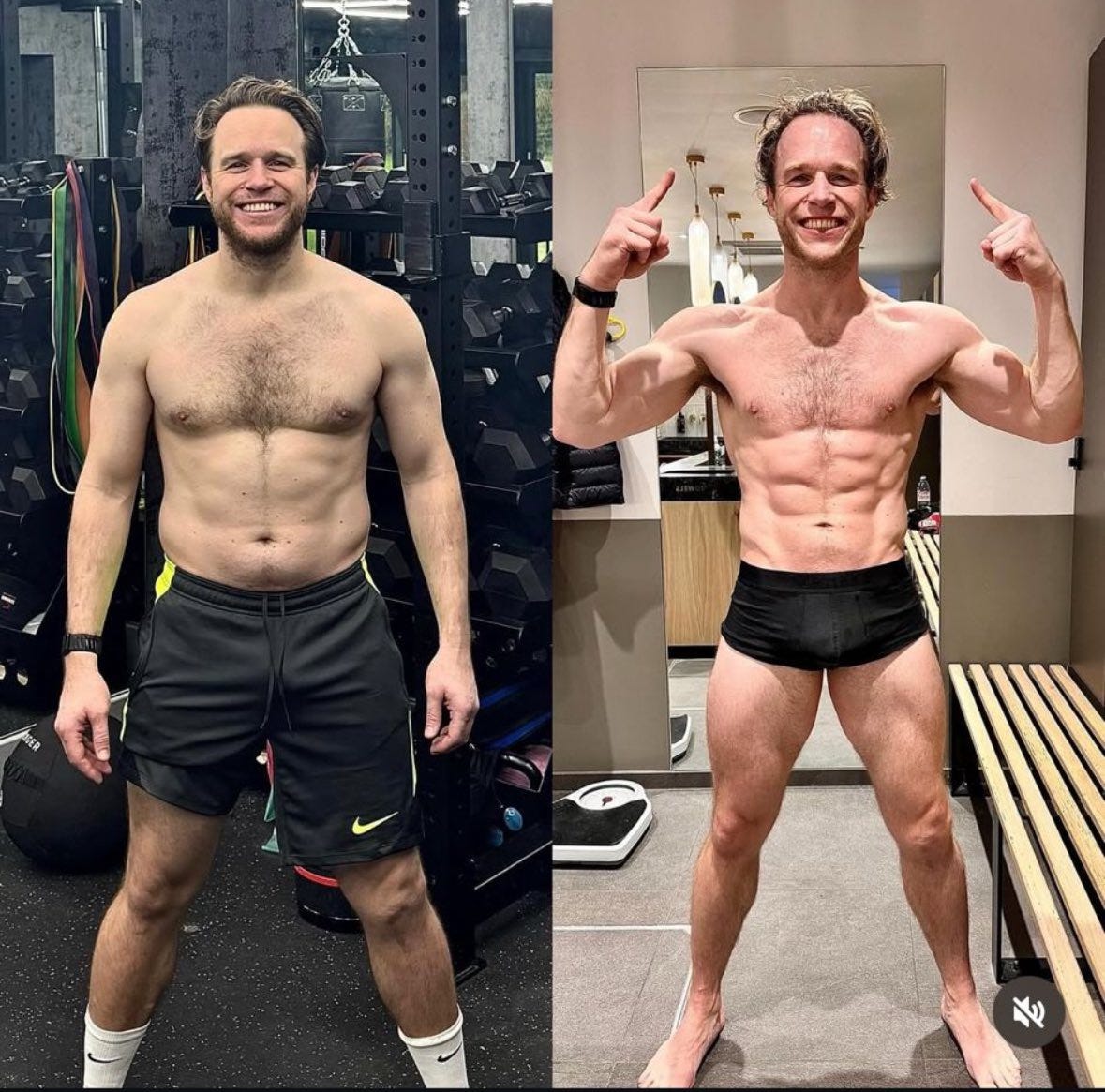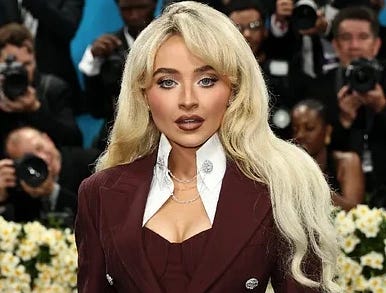Why is Sabrina Carpenter unattractive?
What on Earth is going on between man-Twitter and woman-Twitter?
Lately, there’s been a lot of discussion about why men don’t seem to be that interested in Sabrina Carpenter. That discussion catapulted into wide circulation on Twitter in reaction to two contemporary images released that raised Sabrina Carpenter’s profile and put the subject of her attractiveness front and center.
Sabrina Carter was simultaneously criticized by many women on Twitter for pandering to the male gaze in these two publicity-oriented images while at the same time criticized by many men Twitter for being unattractive: A Rolling Stone cover and an album cover. Widely circulated during the discussion were recent images of Sabrina Carpenter at the Met Gala as a common point of reference for talking about whether or not she was attractive.

As with many of these discussions, there is a point to be made on both sides, and synthesizing the seeming contradiction between the two points is an exercise in public edification. We have a growing divide between men and women, which is not healthy for our society, and so it’s helpful to clarify some of these misunderstandings.
Sabrina Carpenter is attractive
I’m going to start by saying what should be obvious: Sabrina Carpenter, by objective standards, is an attractive woman. She’s a 26-year-old woman with a svelte figure and a full double handful of feminine hourglass material above and below a narrow waist. She has good skin, long hair, and above-average facial symmetry. If the men complaining that she’s unattractive ran into her in the wild without knowing who she was, they would probably find her more attractive than average.1
And yet, the men complaining aren’t lying, because they’re not seeing her “in the wild.” They are seeing her public persona, and her public persona has bad vibes. It’s very similar to how women on Twitter largely converged on saying that Olly Murs was more attractive in his “before” photo than in his “after” photo. Many said he was unattractive.

“In the wild,” Olly Murs’s fitness focus didn’t backfire and get him shunned by women. He got married, he’s grown his music career as a front man fueled by good looks, with (based on the audience pictures I’ve seen) plenty of female fans.
What happened is that women didn’t like the vibes of the photo on the right - the harsh lighting designed to bring out shadows and enhance definition, the flexed muscle pose, the background, the clothing, all of it was a male-oriented aesthetic framing designed to show other men how much work he had put into his body. Twitter women said the man on the right looked like “a douchebag” or “insufferable” while the man on the left was “friendly” or “happy” or even “stronger-looking.”
Sabrina Carpenter is unattractive
Sabrina Carpenter recently released a single called Manchild, a song title likely to inspire many of her male peers to hit the “skip” button before they’ve heard a single word. Her music career has been “girl pop” at the core, music performed by women for a female audience. And her styling choices have, for the most part, reflected this. I’ll call attention to the Met Gala look that has circulated widely on Twitter contemporaneously with the other two photos.
The Met Gala is a fashion-heavy event and this is a very much a typical fashion look, which is to say a blank expression with heavy makeup designed to angularize the face and an outfit designed to angularize the torso. This is unappealing to men both by virtue of the vibes that it signals,2 but also because the fashion industry is built to a large degree around aesthetics that do not appeal to the tastes of straight men.3
Visually and musically, her public persona simply hasn’t been aimed at men as a target demographic. There’s a real degree to which the respectable side of the entertainment industry, from books to movies to music, has lost both the knowledge and inclination to pay attention to what men want.4
Sabrina Carpenter: Guilty of trying to appeal to men
If men find the look fake and unappealing, is Sabrina Carpenter, or her publicists, trying to appeal to men, per the complaints lodged by a certain mainly-female segment of Twitter? Or is there a deeper design?
It’s pretty hard to look at a magazine cover where a woman is dressed in a convincing Lady Godiva costume,5 or an album cover titled Man’s Best Friend featuring a woman kneeling submissively in front of a man, and not reach a simple conclusion: This is meant to appeal to men. Even if her audience is disproportionately female, this kind of imagery draws eyeballs and controversy.6
Even with the opening track being called Manchild.7
Some fans and critics had already reached that conclusion with her previous album, Short ‘n’ Sweet, charging her with the crime of pandering to the male gaze with her tour performances and sexually charged lyrics. But that album didn’t open with the same kind of bold visual statement that this one did, and so it’s Man’s Best Friend that has set even the political section of Twitter a-twittering.
“In the wild” meaning with clothing, makeup, style, and behavior that is more typical of women in general, rather than the set associated with her public persona.
Very consciously discussed with “Man Repeller” fashion, but in general, men don’t like the idea of a woman having a hobby of buying expensive and ugly clothing that is only briefly in fashion.
The two main competing explanations for this are that gay men have an outsized footprint in the world of design, and prefer to create looks that seem more androgynous than feminine, or, alternately, that women seek designs that they are more attracted to, which (due to the prevalence of heterosexual tendencies) tend to be masculinized from the feminine average.
I have several articles-in-waiting on aspects of this sitting in my draft folder. This has played a significant role in the growth of indie book publishing, the rise of manga and anime, the decline of AAA game studios, etc.
I.e., mostly just long hair.
Controversy could be the real goal, but it does seem like common sense that an artist who is finding their own creative legs and has a mostly-female audience might want to see if they can appeal to a male audience.
Maybe she really wants to be sure men get the message she’s trying to send.




